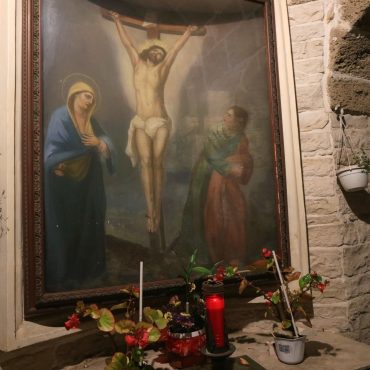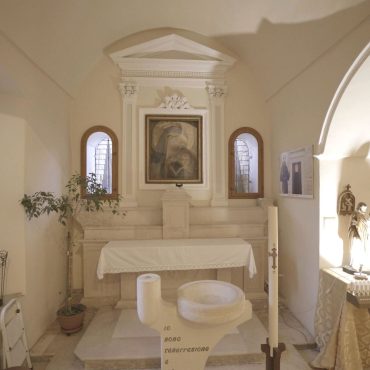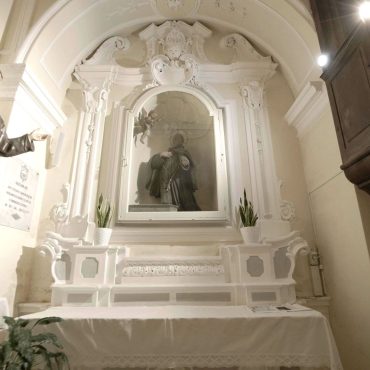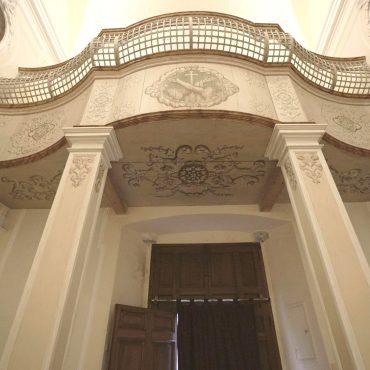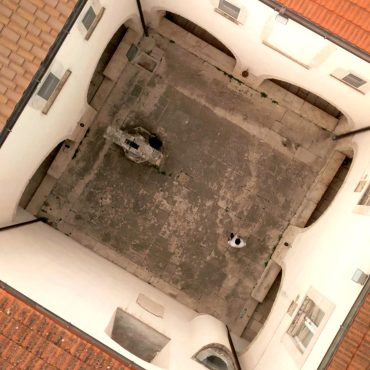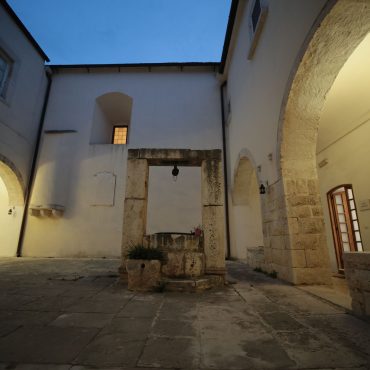
Calvary and Church of San Francesco
(16th-17th century)
The complex made up of the church dedicated to St. Francis of Assisi and the adjoining Capuchin convent has witnessed centuries of change and devotion. Its history began in 1589 when the necessary funds were bequeathed by a generous and pious man named Giovanni Antonio de Gaudio. For more than three centuries it was a centre of spirituality and charity. In 1675, the church was consacrated by Bishop Agnello Alfieri and contrary to the original intention to dedicate it to St. Francis, it was dedicated to San Carlo Borromeo, reflecting religious transformations of the time.
The convent is developed around a central cloister with elegant porticoes and a well, expressing the simple nature of Capuchin monastic buildings, characterised by austerity and solemn semplicity. After the unification of Italy, the convent was abandoned by the monks and found a new vocation: the Daughters of Charity of St. Vincent de Paul established a shelter for the homeless, keeping this tradition of service and solidarity alive until the end of the 20th century. Today the building houses the workshop of the “Filippo Cortese” Music School.
Next to the convent is the Calvario, a place of worship established between 1855 and 1856 on the occasion of the mission of the Redemptorist Fathers in the Diocese of Molfetta. Commissioned by Mayor Frammarino and the Bishop, the Calvario is strategically placed near the monastery walls, reflecting the continuity and spiritual link betwen the two buildings. The Calvario is set apart by its unusual architecture: five small chapels, each one beind gates and set below elegant arches, form a path of meditation and prayer. Inside the chapels paintings illustrating scenes from the Passion of Christ conveys the depth and pain of these sacred events. Other works by Filippo Nisio and the central painting by Giuseppina Pansini depicting the crucifixion lend the Calvario a suggestive aura of devotion and mysticism.


